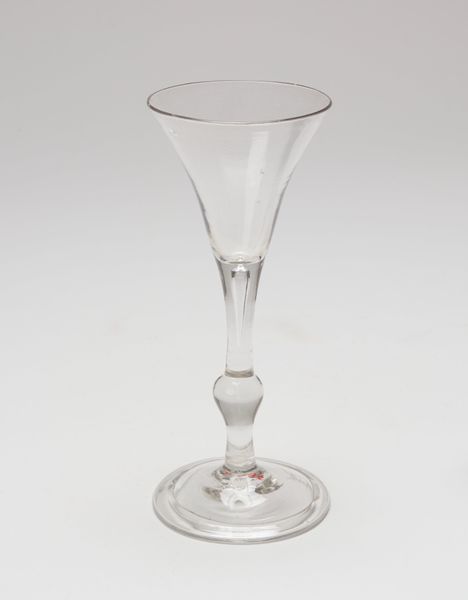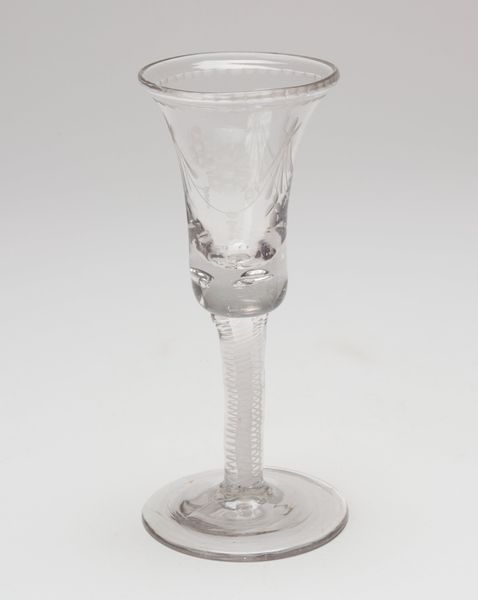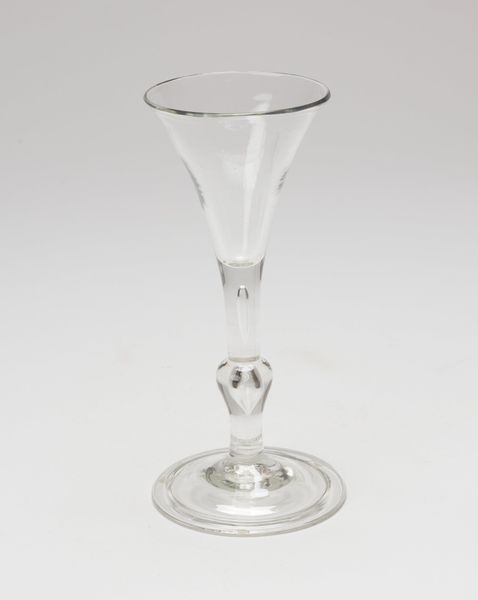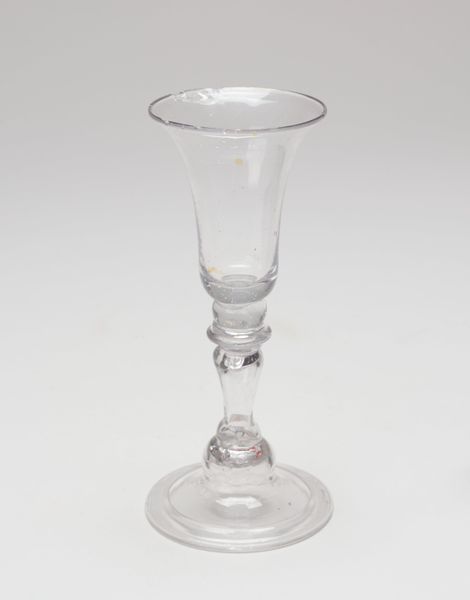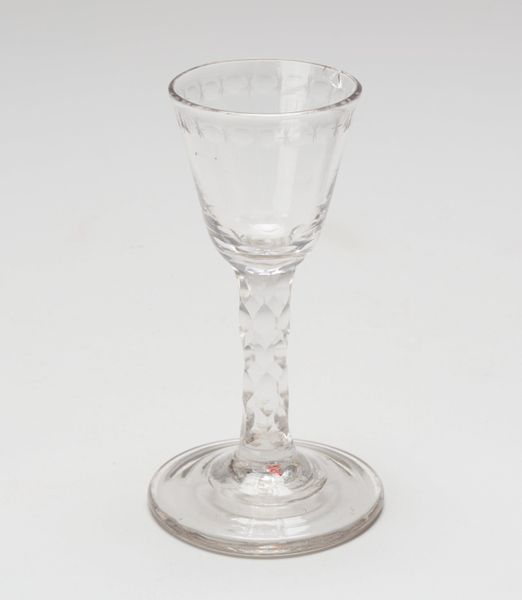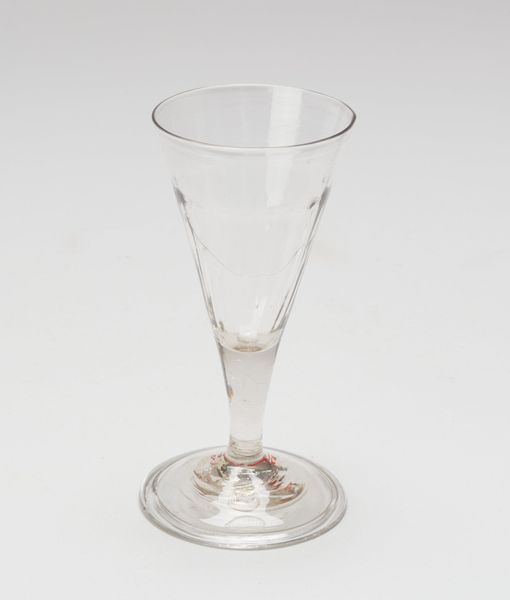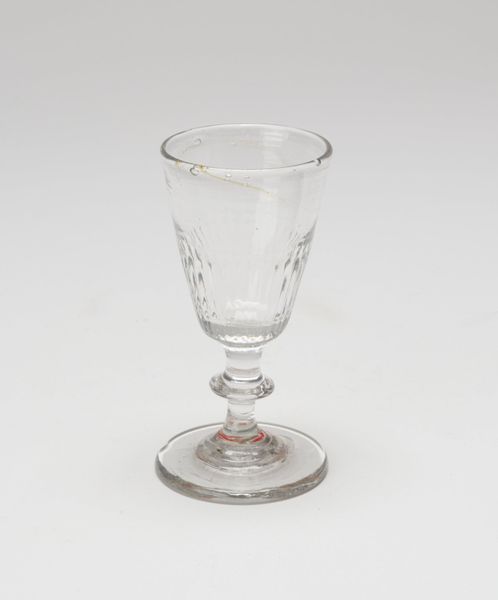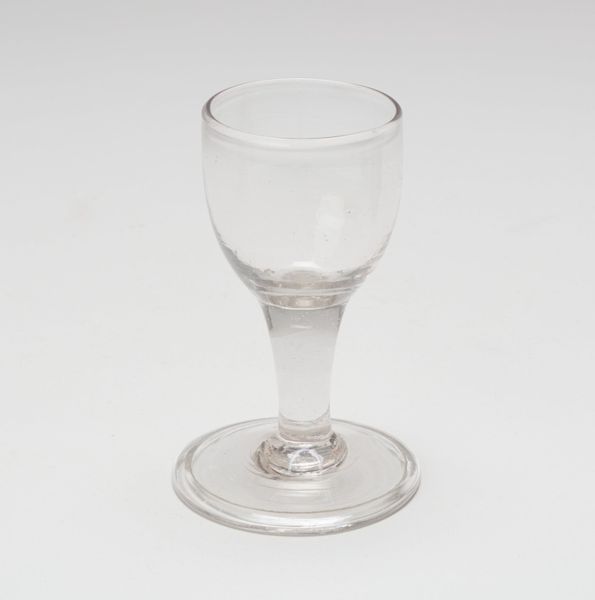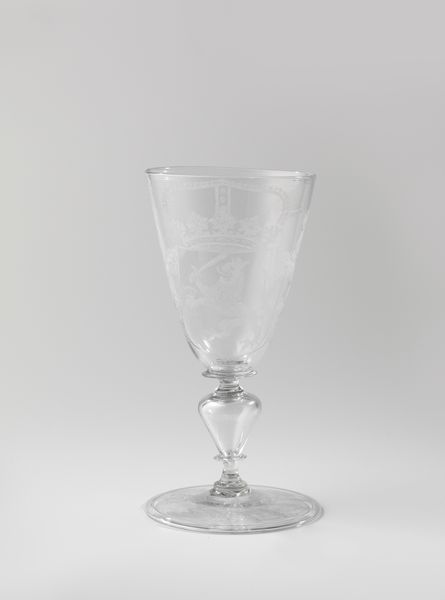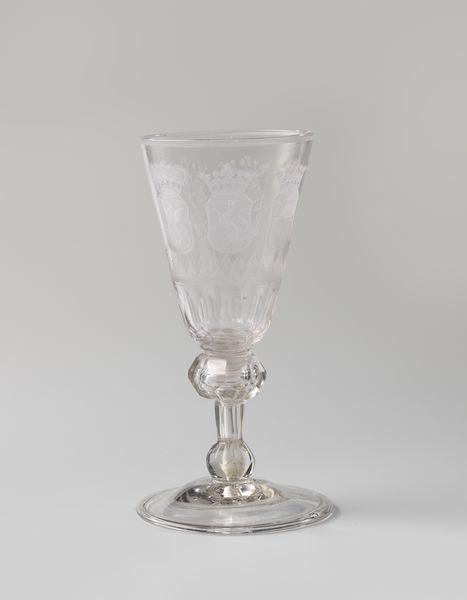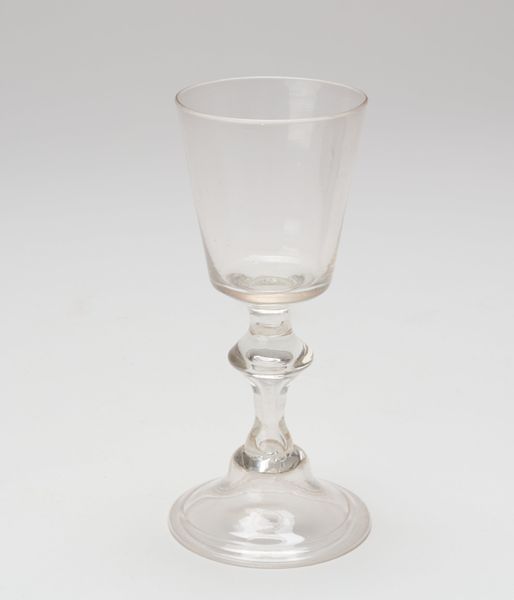
glass
#
product photograph merchandise
#
product studio photography
#
3d printed part
#
product photography advertising
#
product fashion photography
#
glass
#
product design photgrpaphy
#
wash background
#
england
#
ceramic
#
metallic object render
#
product photography
Copyright: Public Domain
Editor: Here we have a Wine Glass, dating back to around 1765, crafted from glass in England. Its slender shape and transparency create a delicate aesthetic. I'm immediately struck by its simple elegance. What do you see in this piece, looking beyond its functionality? Curator: Indeed, beyond its utility, we find a fascinating study in form. Consider the geometry at play: the conical bowl contrasts with the spherical knop in the stem, leading to the circular foot. This interplay of shapes creates a visual rhythm, doesn't it? Note how the transparency of the glass allows light to define its contours. It is pure structure. Editor: I hadn't focused on that geometric dance, that is brilliant! Does the transparency itself have any significance? It almost feels like it disappears. Curator: Precisely. Transparency negates the object’s mass, reducing it to pure form and light. This creates an ethereal quality. The way the light filters and refracts becomes paramount, almost as important as the object itself. Editor: That makes me consider the negative space as being just as important. How the light plays within the void of the glass shape. I never considered drinking glasses as being philosophical objects. Curator: The intention isn’t merely to hold wine. The artist manipulated formal elements: shape, line, light, and transparency, creating, in essence, a study of presence and absence, mass and void. These are visual strategies we also find mirrored across art history. What does thinking about those visual components bring up for you? Editor: Now I see how a seemingly functional item becomes an interesting arrangement of geometrical shapes with carefully studied forms, not really different from sculpture! Thanks for your thoughts. Curator: My pleasure, recognizing these forms can lead us to understand other shapes as forms, so, this work ultimately points to new potential relationships.
Comments
No comments
Be the first to comment and join the conversation on the ultimate creative platform.
